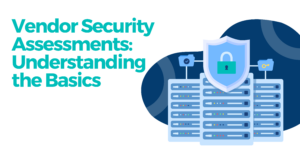Landing a spaceship on the moon is complicated. And yet when governments and companies talk about returning to the moon, there isn’t much doubt that they will achieve their goal given sufficient time and money.
Predicting the weather, or economic markets, on the other hand, is complex. A multitude of interacting parts make it impossible to predict accurately no matter what the budget.
We can get an idea of what the climate will do as a whole, but not be able to say for sure if it’s going to rain tomorrow. We could say that rocket science is merely complicated, but running a company, that’s complex.
If you want to handle complexity, then what you need is a Complex Adaptive System, or CAS.
Like the immune system or a bee colony, these are systems that are made up of seemingly simple units that collectively display amazing emergent behaviours.
The complexity of startups
If a startup company operates in a complex environment, then it’s reasonable to explore the potential adoption of tools from Complex Adaptive Systems.
I first went down this path when I adopted the principles of Lean Startup at the start of MedStack’s journey in 2015.
The Lean method is based on the scientific method and lean manufacturing – it requires a founder to be experimental and iterate rapidly based on customer feedback.
In the early days of MedStack, our experiments were based on what customers were willing to pay for. We implemented features only after receiving a firm commitment from a customer to pay for that feature.
We did things that didn’t scale until we had clear evidence that our market was real and we had some stable income. After a few years we had to redevelop our core tech so that we could scale — by then we had confidence from investors because of the proof from our Lean phase.
A couple of years ago, an opportunity came up to use the lean, experimental method again.
We acquired an application called Exos that nicely complemented our existing offering, and we decided to treat the initial rollout of Exos as an experiment.
We went so far as to call it the Exos Experiment, and I took on the challenge of introducing lean startup and iterative methods to the whole team, most of whom had joined long after our original Lean Startup days.
As we worked this new way, I started to connect the dots with Complex Adaptive Systems.
We negotiated a set of simple targets and rules for the experiment and set up a cross-functional team with the independence and autonomy to act as they thought appropriate.
The team iterated rapidly, in cycles of a few weeks, on all aspects of marketing, sales, product, software development, and customer onboarding.
We started with limited goals and adapted them as we either met them or found they were wrong.
And the most amazing aspect to me, as the executive sponsor, was how independently the team was able to operate while following our shared vision. It was a revelation.
The overlap between CAS and other methodologies
In the last six months, I’ve been learning more about CAS and finding additional overlaps in the methods we use.
For example, our engineering team uses Agile methods which emphasize iteration and managing information about the state of their work on the code.
They are also influenced by Team Topologies, a book that’s all about simplifying the communications between teams.
Across the company we use concepts like KPIs, Single Source of Truth, and RACI, all of which focus on simple rules to encourage self-organization.
Like CAS, each of these methods emphasizes the rules of interaction between units.
CAS and company culture
One of our fundamental strengths that allows us to do this is our culture of psychological safety.
As discovered by Google’s Project Aristotle, this simple concept is about allowing people to confidently share ideas, knowing that they will be received respectfully.
It’s a challenge to achieve and maintain, but I suspect it’s a key to building a CAS at work.
One of my roles now is to deploy CAS-like methods into how we work more broadly at the company.
We have a hypothesis that it can be applied more broadly than just feature innovation; that it can improve many or maybe all aspects of our business.
Given unpredictable events like COVID and the current economic downturn for startups, it makes sense to take on methods that can weather and even benefit from unpredictable black swan events.
For me it checks all the boxes — it makes our products better, our company stronger, and our work more satisfying.
—
Simon Woodside is the Co-Founder, CTO and CISO at MedStack. He is the visionary behind MedStack’s platform and developer offerings. Simon has led a rich career in software development and entrepreneurship, and is a recognized expert in digital security and healthcare technology. He followed a stint at Apple with his first entrepreneurial venture, the world’s first downloadable 2D barcode scanner, covered extensively in the press, then built and led to success a healthcare and IOT-focused full-stack digital app consultancy. Simon is an active community leader, working with both Hacking Health and Engineers Without Borders.





